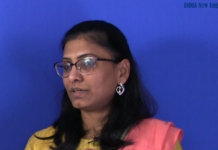By Anu Chitrapu
BOSTON–On September 28, 2018, the Supreme Court of India ruled that women of any age should be allowed to visit the Sabarimalai temple that houses the deity of Lord Ayyappa. Until the court ruling, women between the ages of 10 and 50 were not allowed into the temple.
In spite of the court ruling, to date not a single girl/woman within this age bracket has successfully made it into the temple due to protests, riots, people blocking the paths of women trying to enter etc. In the world’s largest democracy, debates continue as to whether women should be allowed into the temple or not, all while the country is being cited as one of the most dangerous for women, with rape and gender based violence at record highs.
The arguments against allowing women inside the temple mostly cite “age old tradition” that should not be broken. Not a strong argument considering traditions such as not allowing women to vote were clearly discrimination based on gender. No one in their right mind will argue against women practicing medicine, especially given how many women have excelled in this field! Yet, at one time women who dared to practice medicine were considered heretics. So unless a tradition carries some evidence of positive, unbiased benefit, I think the “tradition” card just cannot be played here.

There are many men out there tweeting on the subject and vehemently asking for tradition to be respected. The question for these men is, do you prevent your daughters from studying engineering or medicine because traditionally these professions were not considered right for women? Or will you refuse to let a woman perform surgery on you to save your life just because she is a woman? Hopefully the answer is no.
The second argument, that has been scientifically proven to be untrue, is that women of menstruating age are weak or physically incapable of making the difficult journey to Sabarimalai that required devotees to walk barefoot, sleep on the ground and eat only certain foods. In this day and age when women routinely climb the Himalayas, trek up to Mount Kilimanjaro and participate in just about every sport out there, this argument comes across so weak that now people against the court ruling are saying the 10 to 50 age bracket has nothing to do with menstruating age at all, which makes the argument doubly weak because this is exactly the average age bracket for menstruating girls/women.
There are a third set of arguments, all of which revolve around mythology and stories about the deity being celibate and not wanting women to enter, or of some other woman deity who is in love with this deity and how it is a disrespect to their love because Lord Ayyappa said he will marry her only if women don’t come into the temple. One has to remember that these stories were written by humans at some point in time. Just like the Ramayana and Mahabharata which are great works of literature, rich with learnings that one could use, this is also a story written by someone. At the end of the day, saying women should not enter the temple because of a story about two deities doesn’t really make for a strong argument in this day and age.
As for the many people who are labeling anyone supporting the court ruling as ‘elitist’ or ‘anti-hindu’, it is important to accept neither is true. And asking why only Hindu traditions are being questioned is not relevant because Muslim places of worship like Haji Ali also very recently started allowing women to enter and women hailed that event also as progress. This is not a hindu/muslim issue and making it one only fuels an issue that is already creating a lot of unrest.
So for women who are devotees of Lord Ayyappa and who feel that they really want to see the deity in the temple, the Supreme Court ruling now allows them to do so and unless this is rescinded these women should be allowed to enter. However, it appears that women who are not devotees are some of the first ones lining up to enter the temple, just to prove a point, or get some media attention. And this is leading to riots, police protection for these women, media coverage, disruption to normal life…. is all this really necessary? For women trying to enter solely to prove a point, is it really worth it?
If gender equality is the goal and one does not particularly care about praying at Sabarimalai then there are many more pressing issues and traditions that really need attention. One such tradition is the parents of girls having to pay for weddings and in some worse cases having to pay dowry. How about putting an end to this bad tradition too? Sadly, I don’t see too many young girls refusing to let their parents pay for their wedding — many want a Bollywood style wedding that drives their parents to bankruptcy.
Police resources, journalists, political attention — all of these are very badly needed for causes that help women. And perhaps if people (many of them men) stop paying so much attention to this court ruling, then no one other than the women who have true faith will venture to the temple. If the attention stops, the tweeting, the facebook posts, the numerous debates… everything will stop and the true devotees can follow their faith and offer their prayers inside the temple.
Whether one is a believer a non-believer, a follower of traditions or one who fights for what they believe in, the solution to the Sabarimalai issue needs clear thinking. I really hope that happens soon.
“Where the clear stream of reason has not lost it’s way into the dreary desert sand of dead habit. Where the mind is led forward by thee into ever widening thought and action. Into that heaven of freedom, my father, LET MY COUNTRY AWAKE!” – Rabindranath Tagore
















